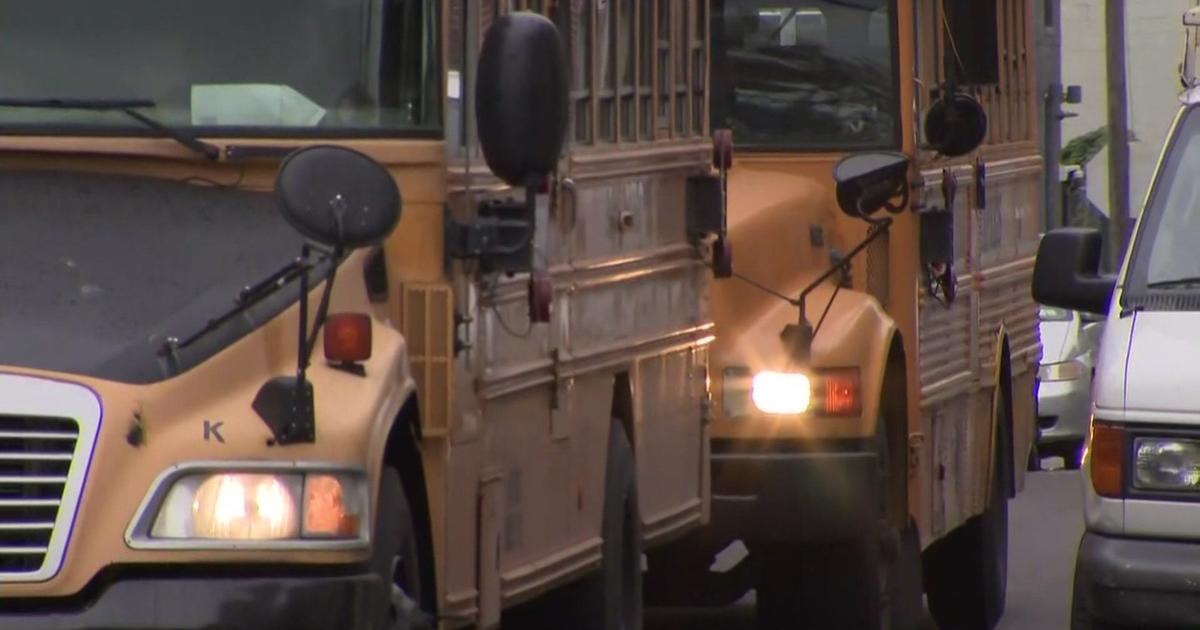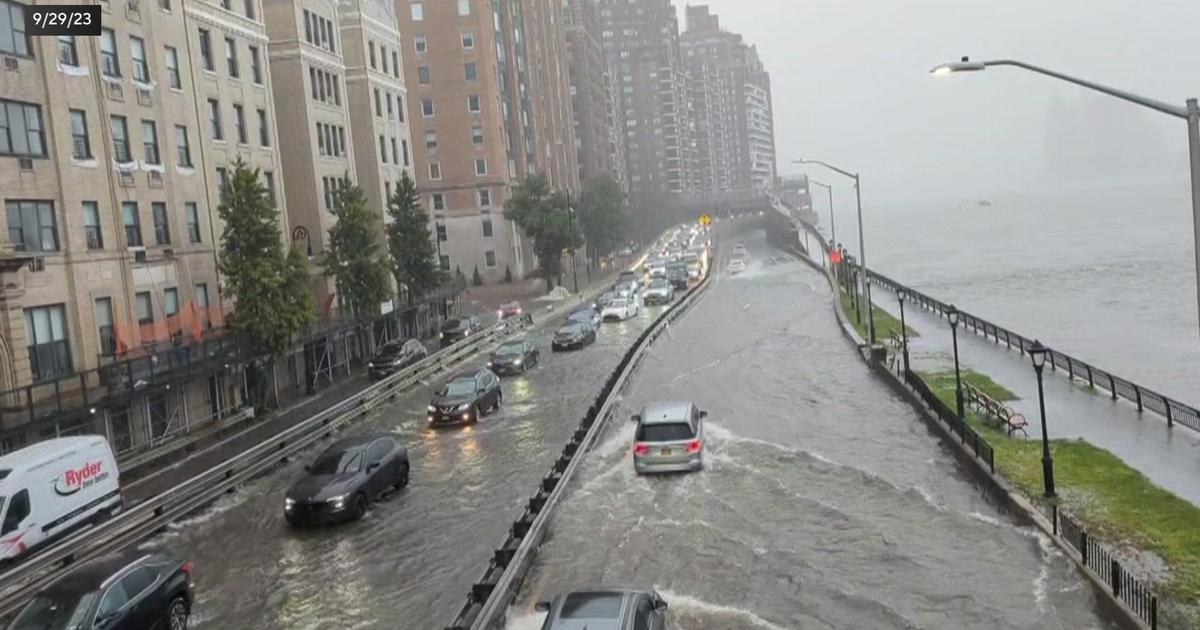West Coast Wildfires Causing Haze, Air Quality Concerns Over Tri-State Area
RIDGEWOOD, N.J. (CBSNewYork) - All that smoke from the wildfires out west created hazy conditions here in the Tri-State Area on Tuesday.
As CBS2's Nick Caloway reports, on a normal, clear day, you can usually see Manhattan from Ridgewood.
Tuesday, all you could see was a thick haze.
"You can pretty much always see the skyline, at least a silhouette, if it's a hazy day. This is, like, this is unprecedented," said Greg Pope, professor of earth and environmental studies at Montclair State University.
Pope took Caloway to a spot on campus where you can usually catch a beautiful view of the Manhattan skyline. Tuesday, you could barely see one town over.
"I think it's unusual to have this kind of haze. I don't recall seeing this kind of thing," Pope said.
Watch Nick Caloway's report --
Environmental scientists say the haze stems from fires raging in the west, including the Bootleg Fire in Oregon, which is only 30% contained.
Experts say the plumes of smoke are reaching so far up into the atmosphere, they're being carried some 3,000 miles east by high winds, blanketing New York and New Jersey in a thick haze.
At the Garret mountain reservation in Paterson, binoculars were pretty much useless.
"It does look different. Usually you can see a clear background, the city, Manhattan and everything. But with all the smoke it looks very cloudy and foggy," said Totowa resident Ash Islam.
"It's a little scary, if you think about it, that the fires are actually reaching all the way over here," said Garfield resident Milly Milagros.
In the city, haze an pollution are a part of daily life. Some were surprised to learn it was actually smoke.
"Of course. I had no idea. I thought it was just a muggy, you know, foggy day," one person said.
Experts say it's still safe to go outside, even with all the smoke particulates in the air. Dr. Keith Rose with Hackensack University Medical Center said that some might need to take it easy.
"And that fine particulate matter can be very troubling for people with lung disease, also children and elderly, as well as heart disease. So when you have any sort of underlying illness you have to be really careful not to overexert yourself in this when you're outside," Rose said.
"At certain times, we all felt like our throats were drying up a little bit and just different," tourist Mona Ali said.
Experts say climate change is driving the record droughts and fueling fires on the West Coast, so this smoky haze could be a recurring theme here.
"It's concerning, and it does concern a lot of the climate scientists as to whether this is kind of the new normal, whether we'll be seeing this every summer," Pope said.
Tuesday, the smoke got thicker as the day went on. In North Jersey, Caloway could actually smell smoke in the air.
Around 7 p.m. Tuesday, from the Hudson River waterfront next to the Intrepid Museum, there was an orange-red glow in the sky. The sun was looking like a little fireball, reflecting onto the water as kayakers and paddleboarders took it in.
"It's very gorgeous," one man told CBS2's Lisa Rozner.
"I guess it's a little bit darker today," another person said.
"I think it's insane," another person said.
"I happen to think it looks really beautiful," one man said.
About an hour later, the sun simply faded into the gray skies instead of creating a gradient of colors.
New York state officials issued an air quality health advisory for the entire state, citing concerns over fine particulate matter from the wildfires.
The advisory is in effect through midnight.
Air quality health advisories are issued when state officials say the Air Quality Index (AQI) rises above 100. The AQI can be driven by pollution, ozone, and fine particulate matter - in this case, haze from the wildfires.
Officials say exposure to fine particulate matter can irritate your eyes, nose and throat, cause coughing, sneezing, runny nose and shortness of breath. Exposure can also worsen certain medical conditions like asthma and heart disease.
New York officials urge people to take the following steps to reduce pollution:
- Use mass transit instead of driving, as automobile emissions account for about 60 percent of pollution in our cities. During the current COVID-19 pandemic, people are strongly advised to carpool only with members of their households
- Conserve fuel and reduce exhaust emissions by combining necessary motor vehicle trips
- Turn off all lights and electrical appliances in unoccupied areas
- Use fans to circulate air. If air conditioning is necessary, set thermostats at 78 degrees
- Close the blinds and shades to limit heat build-up and to preserve cooled air
- Limit use of household appliances. If necessary, run the appliances at off-peak (after 7 p.m.) hours. These would include dishwashers, dryers, pool pumps and water heaters
- Set refrigerators and freezers at more efficient temperatures
- Purchase and install energy efficient lighting and appliances with the Energy Star label
- Reduce or eliminate outdoor burning and attempt to minimize indoor sources of PM 2.5 such as smoking.
For more information, CLICK HERE.
Nick Caloway contributed to this report. Editor's note: This story was first published on Tuesday, July 21.



